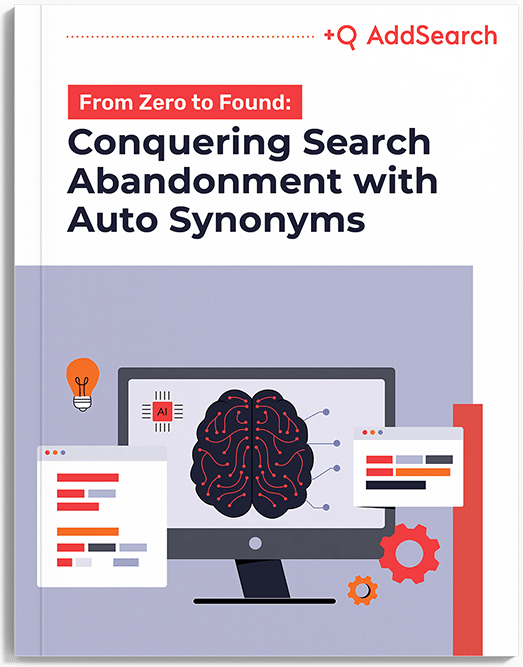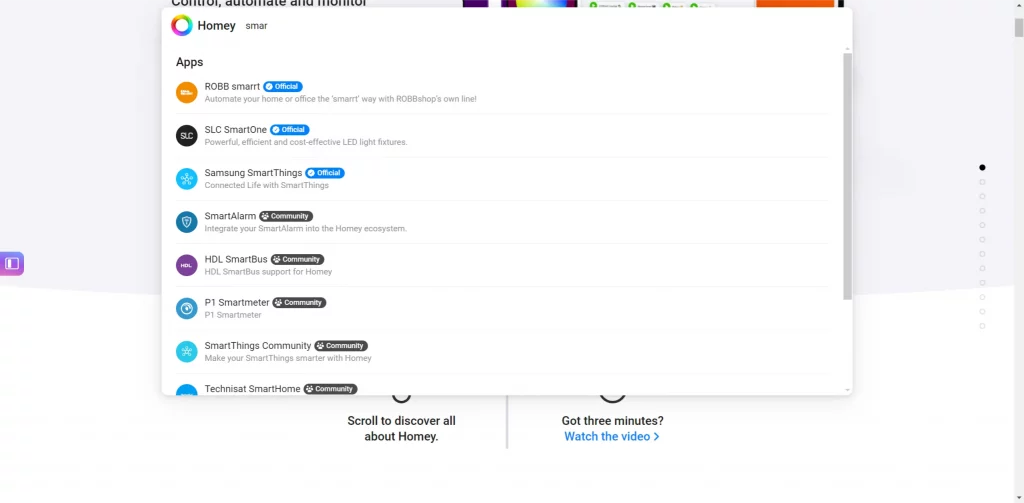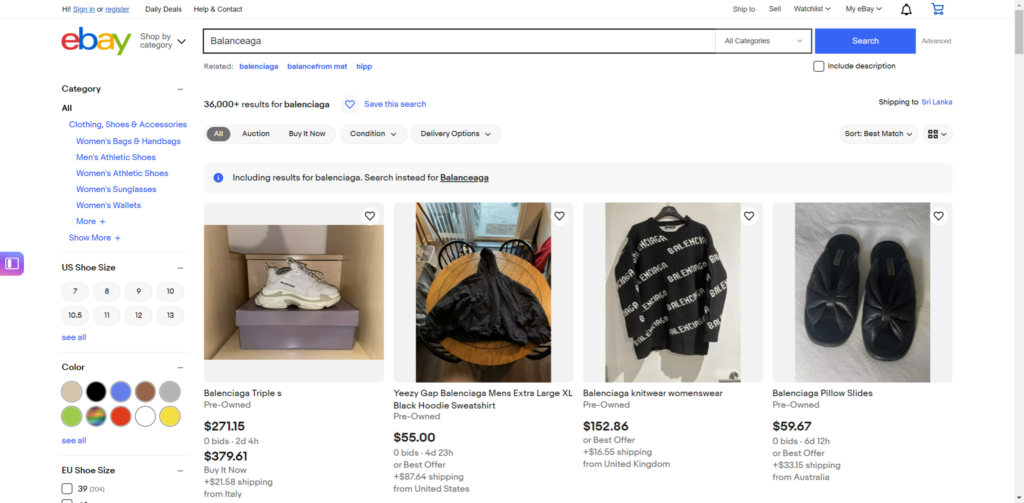E-commerce is booming, but are you struggling to keep up? The secret weapon to outpace your competitors isn’t some hidden trick – it’s your site’s search bar! That’s right, e-commerce growth hacking often starts with optimizing the one tool almost half of your customers use first: site search.
Think about it: 49% of shoppers use the site search bar more frequently than the navigation menu, and 43% of shoppers prefer to skip the navigation menu altogether and head straight for the search bar. Yet, most digital marketers treat site search like an afterthought, leaving massive potential for e-commerce growth untapped.
Imagine walking into a store where everything’s a mess, and no one’s around to help. Frustrating, right? That’s how your customers feel when they can’t find what they want. A killer site search transforms that frustration into a seamless shopping experience, turning browsers into buyers.
This isn’t just some techy thing you leave to the IT folks. Site search is a goldmine of customer insights, a tool to create personalized shopping experiences, and the secret ingredient in many growth hacking strategies for e-commerce.
In this post, we’re diving into eight game-changing e-commerce growth hacks that’ll transform your site search into a conversion powerhouse. Get ready to turn your search bar into a sales machine!
1. Unlocking e-commerce growth through site search analytics
Your site’s search bar isn’t just a tool—it’s a direct line to your customers’ minds and a goldmine of e-commerce growth opportunities. What are they craving? What problems are they trying to solve? The answers are all there, buried in your site search data.
Why site search analytics matter for e-commerce growth:
By understanding what your customers are searching for, you can:
- Spot emerging trends and capitalize on them before your competitors.
- Uncover and eliminate those frustrating pain points that make shoppers bounce.
- Make smart, data-driven decisions to improve your site search and product offerings, leading to increased conversions and revenue.
The result? Happier customers, a boost in e-commerce sales, and a competitive edge in the market.
How to harness the power of site search analytics:
- Track and analyze search queries: Use analytics tools (like Google Analytics or your e-commerce platform’s built-in analytics) to regularly review what people are typing into your search bar. Look for patterns, popular terms, and those frustrating “no results” searches.
- Identify gaps and opportunities: Figure out which search terms are hot and which ones are coming up empty. This helps you spot holes in your product lineup or areas where your search function needs a tune-up.
- Optimize content and offerings: Tailor your product descriptions, blog posts, and even your search algorithm to match what people are looking for. Make sure those popular search terms lead to relevant results, and use those “no results” searches to inspire new products or content that caters to unmet customer needs.
Real-world example of e-commerce growth hacking:
Think about how Netflix uses search data. By analyzing what shows and movies people are searching for, they can recommend similar content, spot trends, and even decide what new shows to create. They’re constantly adapting to meet viewer demand, and it’s a big reason why they’re so successful. You can apply the same principles to your e-commerce growth strategy.

2. Boost e-commerce conversions with a user-friendly site search
A happy customer is a paying customer, right? And a returning one, too! A fast, intuitive, and accurate site search is like rolling out the red carpet for your users, making them feel right at home and boosting your e-commerce conversion rate.
Why user satisfaction is key to e-commerce growth:
A positive user experience is the secret sauce to:
- Higher conversion rates (cha-ching!)
- More repeat visits (hello, loyal customers!)
- Word-of-mouth marketing (free advertising!)
When users trust your site search to deliver the goods quickly and accurately, they’re more likely to stick around, explore, and ultimately, buy. It’s a simple yet powerful growth hacking strategy for e-commerce.
How to create a site search that converts:
- User-friendly design: Keep your search bar clean, simple, and easy on the eyes. No one likes a cluttered search bar.
- Speed and accuracy: Your search algorithm needs to be lightning fast and laser accurate. Slow or irrelevant results? That’s a recipe for a bounce.
- Visual appeal: Spice up your search results with high-quality images and clear, concise descriptions. Make it a feast for the eyes, and they’ll be more likely to click and buy.
Real-world example of e-commerce growth hacking:
Etsy’s site search is a masterclass in user satisfaction. It’s simple, fast, accurate, and visually appealing. Their high-quality images and clear descriptions make browsing a joy, leading to happy customers and repeat purchases. It’s a prime example of how a well-optimized site search can drive e-commerce growth.

3. Simplify the customer journey to boost e-commerce growth
In the world of e-commerce, friction is the enemy. When customers land on your site, they should be able to find what they’re looking for faster than you can say “add to cart.” A smooth customer journey is the key to turning those clicks into conversions and achieving sustainable e-commerce growth.
Why it matters:
A seamless search experience is like a well-paved road to purchase. Remove the obstacles, and your customers will happily cruise right into your checkout.
- Reduced friction = Increased sales: When your site search is intuitive and efficient, customers are more likely to stay, explore, and ultimately buy.
- Happy customers = Repeat business: A frustration-free shopping experience builds trust and loyalty, encouraging customers to return for more.
- Word-of-mouth marketing: Happy customers can’t help but share their positive experiences, bringing you even more business through organic growth hacking e-commerce tactics.
How to create a frictionless customer journey:
- Prominent search bar: Make your search bar the star of the show. Place it front and center, usually at the top of your homepage and every other page.
- Simple and intuitive experience: Your search interface should be so easy to use, even your grandma could figure it out. Avoid clutter and unnecessary steps.
- Relevant results: Don’t make your customers dig for what they want. Ensure your search results are accurate, relevant, and tailored to their query.
Real-world example of e-commerce growth hacking:
Robert Gordon University‘s website is a prime example of a seamless user journey. The university saw that students needed to find course info fast, so they added an easy-to-spot course search bar right on the homepage.

4. Personalize the e-commerce experience for maximum growth
Personalization is a powerful tool for unlocking significant e-commerce growth, and in the age of Netflix and Spotify, personalization isn’t a luxury—it’s an expectation. Your customers want to feel seen, understood, and catered to. And guess what? Your site search data holds the key to making that happen.
Why personalization is a growth hacking strategy for e-commerce:
Personalized experiences are like a warm hug for your customers. They show you care, and that translates to:
- Increased trust and loyalty: When customers feel like you “get” them, they’re more likely to trust your brand and become repeat buyers.
- Higher average order values: Personalized recommendations often lead to impulse buys and bigger shopping carts.
- Improved customer retention: Customers who feel valued are more likely to stick around for the long haul.
How to personalize the shopping experience:
- Use search data: Dive into your search data to uncover those hidden gems—customer preferences and behaviors. This treasure trove of information can help you recommend products that are more likely to pique their interest.
- Email personalization: Don’t let those abandoned carts gather dust. Send personalized emails with product recommendations based on their search history. It’s a gentle nudge that often leads to a sale.
- Personalized search results: Tailor search results based on individual user profiles and past interactions. Show them recently viewed items or prioritize categories they’ve shown interest in. It’s like having a personal shopper on hand.
Real-world example of e-commerce growth hacking:
Spotify is the king of personalization. It uses your search and listening history to curate playlists and recommend songs just for you. This personalized touch keeps users engaged and coming back for more. You can apply these same growth hacking e-commerce tactics to your online store.

5. Refine search results
Think of your search results as a treasure map. If it’s confusing or leads to dead ends, your customers will abandon their quest. But a well-refined search result is like a treasure map with a big, flashing arrow pointing to the X, guiding users straight to their desired products and boosting your e-commerce growth.

Losing customers to no hit searches? Auto Synonyms helps turn every missed search into a successful find. Learn how in our latest white paper.

Why it matters:
When customers find what they’re looking for quickly and easily, they’re more likely to:
- Stay on your site: A frustrating search experience sends shoppers running to your competitors.
- Make a purchase: The easier it is to find products, the easier it is to buy them.
- Become repeat customers: A positive search experience builds trust and encourages return visits.
How to refine your search results for e-commerce growth hacking:
- Faceted search and filtering: Give your customers the power to narrow down their search results by specific criteria like price, brand, color, size, etc. It’s like having a personal shopping assistant at their fingertips.
- Synonyms: Your search engine needs to be a word wizard. Make sure it understands that “jumper” and “sweater” are the same thing, so customers find what they’re looking for, no matter how they describe it.
- Optimize for common queries: Regularly review your search data and optimize your results for the most frequently searched terms. This ensures the most relevant products are always front and center.
Real-world example of e-commerce growth hacking:
Zalando’s search functionality is a shining example of refined search results. Their faceted search and filtering options make it a breeze for customers to find exactly what they want, leading to a smoother shopping experience and higher conversions.

6. Speed up searches
In the fast-paced world of online shopping, speed is everything. Your customers expect search results faster than a New York minute. A lightning-fast search function isn’t just a nice-to-have; it’s a game-changer for boosting your e-commerce sales.
Why speed matters:
- User expectations: Today’s shoppers are used to instant gratification. Slow searches lead to frustration and abandoned carts.
- Increased engagement: A speedy search keeps users engaged and encourages them to explore more products, increasing the likelihood of a purchase.
- Competitive advantage: A fast site search can set you apart from competitors who are still stuck in the slow lane.
How to turbocharge your site search:
- Optimize your search algorithm: Fine-tune your search algorithm for speed. Think of it like a Formula 1 car, engineered for maximum performance.
- Minimize load time: Streamline your server response times and cut out any unnecessary data processing. The less time it takes to load, the happier your customers will be.
- Autocomplete: This handy feature suggests relevant search terms as users type, speeding up the search process and guiding them towards the products they desire.
Real-world example of e-commerce growth hacking:
Homey, the smart home hub manufacturer, knows a thing or two about speed. Their search-as-you-type feature is lightning-fast, suggesting products as soon as you start typing, enhancing the user experience and keeping them engaged, ultimately driving sales and e-commerce growth.

7. Slash abandoned carts with a site search that works
Let’s face it: abandoned carts are the bane of every e-commerce entrepreneur’s existence. But what if your site search could help you rescue those lost sales? It’s not magic, but it’s pretty darn close.
Why it matters:
When customers can’t find what they’re looking for, they bounce. It’s like a ghost town in your online store. But a robust site search can turn that around:
- Keep customers engaged: A good site search keeps customers on your site, guiding them toward the products they want.
- Reduce bounce rates: When customers find what they need, they’re less likely to leave empty-handed.
- Recover abandoned carts: A helpful search function can remind customers of what they were interested in, leading them back to their cart.
How to rescue those abandoned carts:
- Intuitive search results: Make sure your search results are easy to understand and relevant to the customer’s query. Use clear categories and filters to help them narrow down their options.
- Error tolerance: We all make typos. A smart search function can handle misspellings and still deliver relevant results.
- Relevant suggestions: If a search doesn’t yield exact matches, offer alternative or related products. This keeps customers engaged and exploring.
Real-world example of e-commerce growth hacking:
eBay is a pro at reducing cart abandonment. Even if you misspell a product name, their search algorithm suggests correct spellings and related items. This keeps customers on track and helps them find what they need, ultimately leading to more sales.

Want to learn more about how search algorithms handle misspellings and improve user experience? Check out our detailed blog post on fuzzy search
8. Optimize for Mobile
In today’s mobile-first world, your site search needs to be as mobile-friendly as your customers. Think about it: over 60% of all internet traffic comes from mobile devices. If your site search isn’t optimized for those tiny screens, you’re missing out on a massive opportunity for e-commerce growth.
Why mobile optimization matters:
- User Experience: A clunky mobile search experience is a surefire way to send potential customers running for the hills (or to your competitors).
- Increased Traffic: More and more people are shopping on their phones. A mobile-optimized site search can help you capture that growing market.
- Higher Conversions: When customers can easily find what they’re looking for on their phones, they’re more likely to complete their purchase.
How to make your site search mobile-friendly:
- Responsive design: Your search bar and results should adapt seamlessly to any screen size, from a giant tablet to a tiny smartphone.
- Touch-friendly interface: Make sure your search interface is easy to use with a fingertip. Think big buttons and swipe-friendly filters.
- Fast load times: Mobile users are notoriously impatient. Optimize your site for speed, so your search results load in a flash.
Real-world example of e-commerce growth hacking:
Saka’s mobile site search is a shining example of how to do it right. The search bar is easy to find, the interface is intuitive, and the results load quickly. This focus on mobile optimization has undoubtedly contributed to their continued success in the e-commerce space.

9. Integrate voice search
Voice search is the new kid on the block, and it’s growing faster than a teenager on a growth spurt. With the rise of smart speakers and voice assistants like Siri and Alexa, more and more people are using their voices to search for products online. If you’re not optimizing for voice search, you’re missing out on a major opportunity for e-commerce growth.
Why voice search matters for e-commerce growth:
- Changing user behavior: Voice search is becoming increasingly popular, especially among younger generations and those on the go.
- Convenience: Voice search is hands-free and super convenient, making it a preferred method for many users.
- Long-tail keywords: Voice searches tend to be longer and more conversational, opening up new keyword opportunities for your e-commerce store.
How to optimize for voice search and boost e-commerce growth:
- Enable voice search: Make sure your site search function is equipped to handle voice queries. This might involve integrating with voice search APIs or using voice-enabled search plugins.
- Focus on long-tail keywords: Optimize your product descriptions and content for long-tail keywords that people are likely to use in voice searches. Think about how people naturally speak when asking for something.
- Test and refine: Regularly test your voice search functionality to ensure it’s working smoothly and delivering accurate results.

Example: Look at how Amazon integrates voice search. Users can simply speak their queries, and the system quickly returns relevant results, making the shopping experience more convenient and efficient. This forward-thinking approach is a prime example of how to leverage voice search for e-commerce growth.
10. Continuous optimization
Think your site search is perfect? Think again! In the ever-evolving world of e-commerce, resting on your laurels is a recipe for disaster. Continuous optimization is the key to staying ahead of the curve and ensuring your site search remains a powerful engine for e-commerce growth.
Why continuous optimization matters:
- Changing User Behavior: Customer preferences and search habits are constantly evolving. Regular optimization ensures your site search keeps up with the times.
- Algorithm Updates: Search engines like Google are always tweaking their algorithms. Staying on top of these changes is crucial for maintaining your search rankings.
- Competitive Landscape: Your competitors aren’t standing still. Continuous optimization helps you stay one step ahead and maintain your edge.
How to continuously optimize your site search:
- Regular Audits: Think of this as a health check-up for your site search. Regularly review your search performance metrics and user feedback to identify areas for improvement.
- User Testing: Get real users to test your site search and provide feedback. This invaluable insight can help you pinpoint pain points and make necessary adjustments.
- A/B Testing: Experiment with different search features and layouts to see what works best for your customers. This data-driven approach ensures you’re always making improvements that resonate with your audience.
Unleash your site search’s full potential for e-commerce growth
Site search isn’t just a tool; it’s the beating heart of your e-commerce store. By implementing these 10 e-commerce growth hacks, you can transform your site search into a conversion powerhouse that not only satisfies your customers but also drives significant e-commerce growth.
Recap: your e-commerce growth hacking toolkit
- Understand Customer Needs: Use search data to gain valuable insights into customer preferences and optimize your content accordingly.
- Enhance User Satisfaction: Create a user-friendly design, prioritize speed and accuracy, and make your search results visually appealing.
- Simplify the Customer Journey: Make it effortless for users to find what they need with a prominent, intuitive search bar and relevant results.
- Personalize the Experience: Tailor search results and email marketing campaigns based on user behavior and search history.
- Refine Search Results: Implement faceted search, use synonyms, and optimize for common queries to enhance search accuracy.
- Speed Up Searches: Optimize your search algorithm for speed, minimize load times, and use autocomplete to help users find what they need quickly.
- Reduce Abandonment: Keep users engaged with intuitive search results, error tolerance, and relevant suggestions.
- Optimize for Mobile: Ensure your search function is mobile-friendly with a responsive design, touch-friendly interface, and fast load times.
- Integrate Voice Search: Embrace the future of search by enabling voice search capabilities and optimizing for long-tail keywords.
- Continuous Optimization: Regularly audit, test, and refine your site search to stay ahead of the curve and maintain peak performance.
Ready to transform your site’s search function into a conversion powerhouse? Start implementing these growth hacking strategies for e-commerce today and watch your conversion rates soar! If you need additional tips or want to see how these strategies can work for your business, drop us a message or give our team a call. We’re here to help you make the most of your site search and achieve lasting e-commerce growth.
Experience the Best in Search Solutions with AddSearch – Top Rated on SourceForge! Click for Your Free, Personalized Demo Now.




